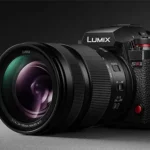Something that I’ve been collecting over the years is a document filled with my favorite photography quotes. This document contains quotes from all the masters such as Ansel Adams, Helmut Newton, and even modern contemporary photographers such as Annie Leibovitz.
The one that I was looking at today comes from photography instructor Rick Sammon, and it really hit a chord with what I’ve been doing lately.
“The name of the game is to fill the frame.” — Rick Sammon
So what does this mean? Well, have you ever been walking down the beach and seen a beautiful seashell? Sure, you’re surrounded by ocean and sand, but in that moment all you see is a beautiful seashell.
Your mind fixes its gaze and only begins to focus on the detail in that shell. This is how, as photographers, we should use our tools to draw the viewer’s eye, emotions, and perception. As a photographer, we should use this concept to get close and fill the frame. Being up close and personal to a subject brings the viewer in. This technique allows us to lean forward and examine all the small details that make up the wondrous object before us. Filling the frame offers a sense of completeness, clarity, inclusion, and comfort. We essentially “dive in” and experience the true essence of what the subject has to offer.
This theory of “filling the frame” can be applied to any and all forms of photography that you run into. Landscape, macro, portrait, architecture, product, wedding, lifestyle… You should always “fill the frame.”
Why? Because in today’s world, there is no use for extraneous material. There’s no need for clutter. We must be taken to the exact point of interest that you as a photographer are trying to show, and include nothing else.
This theory of course, is not a “hard and fast law.” It is only a theory… Another tool in your arsenal in order to most efficiently and effectively broadcast your message.
An example of this would be photographing a lone bird on a telephone pole. What emotions are you trying to show? If it’s aloneness, and you want the viewer to feel a sense that the bird is the only thing in its environment… Do you think you should “fill the frame?” Probably not. You would most likely want to frame the bird with lots of open space around it to evoke this emotion. So of course, use your best judgment.
I hope the theory of “filling the frame” is helpful in your pursuit and journey of opening your mind and sharing your imagery with the world. Take it, move forward and enjoy.
About the Author:
Lucas Martling is the founder of ThePhotoFormula.com. he teaches photographers how to maximize their efforts in photography, post-processing, social media, and running a successful photography business. His latest program titled “The Photography Social Media Formula” is in it’s final stages for release. To download his free, action-packed photography guidebook titled “The 7 Deadly Photo Mistakes” visit http://www.thephotoformula.com/photo. This free photography book is jam packed with tips and tricks which will catapult your photography to the next level.
Like This Article?
Don't Miss The Next One!
Join over 100,000 photographers of all experience levels who receive our free photography tips and articles to stay current:








Ansel Adams wayward younger sister?
Who is Angel Adams?
I shoot wedding photography and hire second shooters. My one complaint is “fill the frame”. Show me a point of view. It may be a wide shot or extreme close up, but have a focal point. Show me what’s beautiful and let me see a subject in good light.
Great article & also some very valuable advice from Steve. It is always best to leave some space around whatever you are trying to capture. That way you will be prepared for any eventuality. Like if someone wants a copy of your work. It could be severely compromised if there is not enough space left for the necessary crop.
This is generally good advice, but you might also want to think ahead to what you are eventually going to do the the picture. If you are going to only display it on the Web or computer slide shows, go ahead a fill the frame. However if you are going to have it printed and framed you might want to consider the rapidly becoming obsolescent “standard” picture sizes. Most likely, your camera produces images in a 2×3 aspect ratio. If you fill the frame you will find yourself cropping some of your composition if you want to fit a 5×7, 8×10 or 11×14 or larger variation ready made mat and frame.
Several years ago I wanted to have a perfectly composed picture I had taken at the zoo matted and framed. I found I could get printed as a 8×12, but I ended up have to pay an exorbitant for a custom mat to fit a 8×12 print in an 11×14 frame. Happily, today 8×12 mats and frames are beginning to show up on the retail market, but 5×7 or 11×14 prints still require some planned slack left in your composition to allow for cropping without losing part of the subject. Hopefully the day is coming soon when mat and frame makers will awaken to the fact the nobody is shooting 4×5 Speedgraphics any longer and begin getting with the 2×3 aspect ratio.
A very interesting article, thak you so much! :)